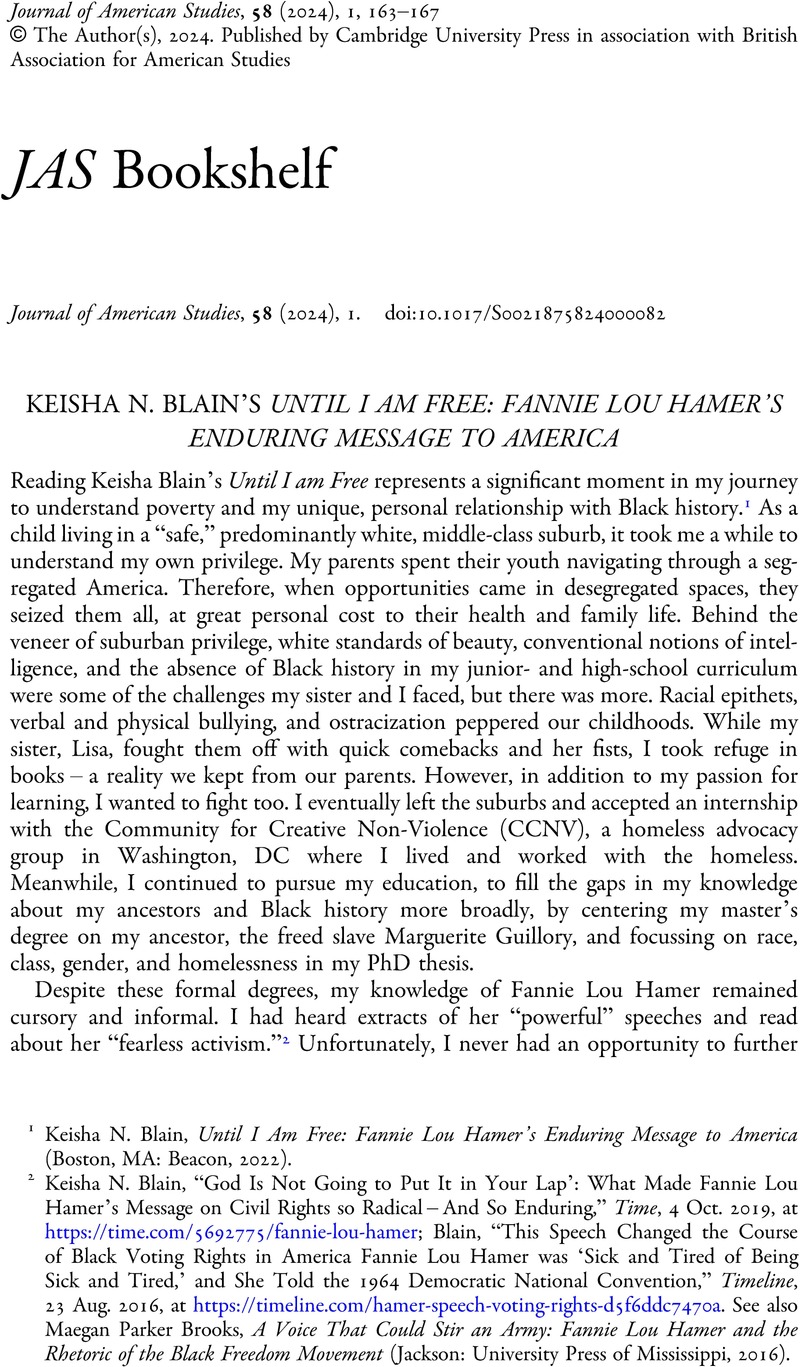No CrossRef data available.
Published online by Cambridge University Press: 07 May 2024

1 Blain, Keisha N., Until I Am Free: Fannie Lou Hamer's Enduring Message to America (Boston, MA: Beacon, 2022)Google Scholar.
2 Keisha N. Blain, “God Is Not Going to Put It in Your Lap’: What Made Fannie Lou Hamer's Message on Civil Rights so Radical – And So Enduring,” Time, 4 Oct. 2019, at https://time.com/5692775/fannie-lou-hamer; Blain, “This Speech Changed the Course of Black Voting Rights in America Fannie Lou Hamer was ‘Sick and Tired of Being Sick and Tired,’ and She Told the 1964 Democratic National Convention,” Timeline, 23 Aug. 2016, at https://timeline.com/hamer-speech-voting-rights-d5f6ddc7470a. See also Brooks, Maegan Parker, A Voice That Could Stir an Army: Fannie Lou Hamer and the Rhetoric of the Black Freedom Movement (Jackson: University Press of Mississippi, 2016)Google Scholar.
3 Nicole M. Gipson, “Fannie Lou Hamer's Legacy: An Interview with Keisha N. Blain,” Black Perspectives (blog), 27 Sept. 2021, at www.aaihs.org/fannie-lou-hamers-legacy-an-interview-with-keisha-n-blain; Gipson, “Until I Am Free: Teaching Fannie Lou Hamer Past and Present” Black Perspectives (blog), 3 Feb. 2022, at www.aaihs.org/until-i-am-free-teaching-fannie-lou-hamer-past-and-present.
4 Roberts, Dorothy E., Killing the Black Body: Reproduction and the Meaning of Liberty (New York: Vintage, 1999)Google Scholar.
5 Gipson, “Fannie Lou Hamer's Legacy”.